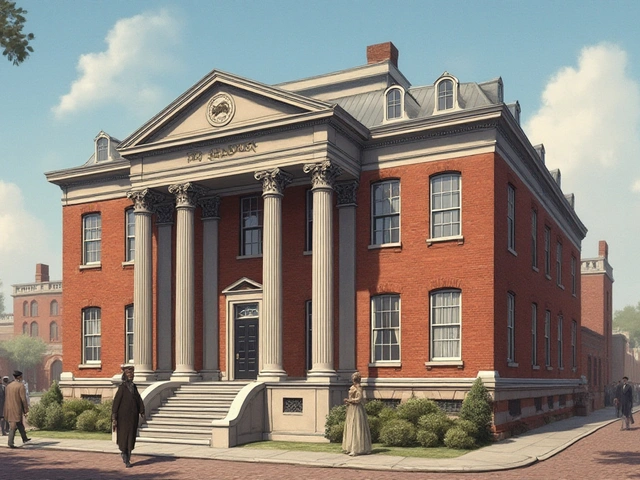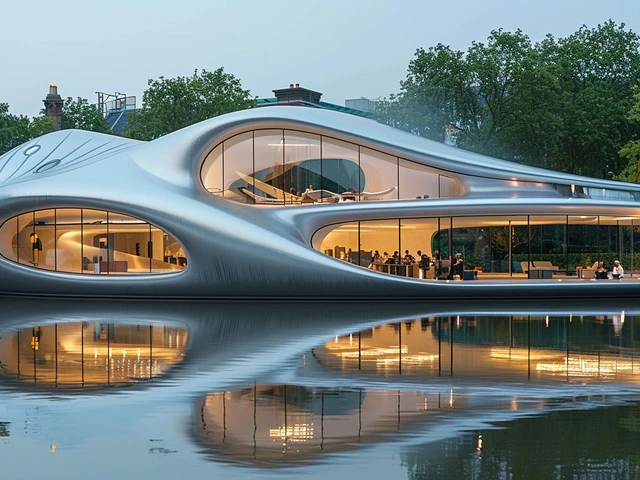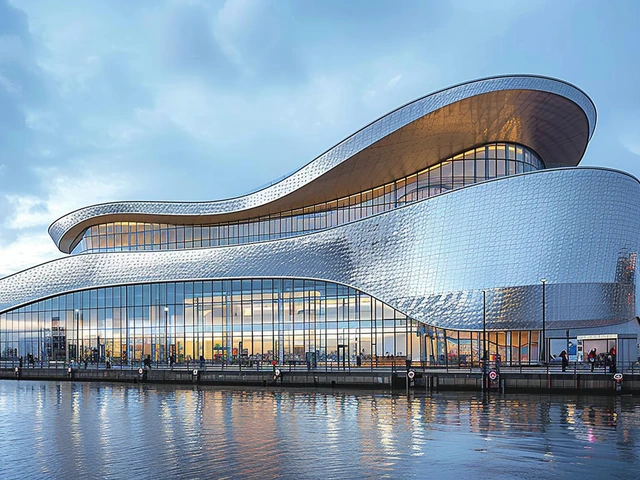Expressionist architecture really broke the mold when it came onto the scene in the early 20th century. It was all about innovation and breaking away from the traditional building forms. Bold, imaginative, and sometimes downright dramatic, this style uses eye-catching shapes and materials to evoke emotion and wonder.
Starting with its roots in the aftermath of World War I, expressionist architecture was often seen as a reflection of the tumultuous times. Architects sought to express the feelings of uncertainty and hope through their designs. These buildings aren't just visually striking—they carry a deep narrative and are often seen as works of art in their own right.
The architecture is characterized by non-linear designs, organic forms, and the use of new construction materials and techniques. Think of buildings with sweeping curves, sharp angles, and unexpected shapes. The goal was to create an emotional response and challenge the conventional notions of what a building should look like.
Significant contributors to this movement include architects like Erich Mendelsohn, Bruno Taut, and Hans Poelzig. Each brought their unique vision to the table, shaping urban landscapes with their distinctive styles. Their influence can still be seen in the avant-garde designs of today, proving that the impact of expressionist architecture is both profound and lasting.
Origins and Evolution
The dawn of expressionist architecture is often traced back to the turbulent period following World War I. During this time, architects sought to break from the rigid structures and ornate designs of previous eras. They wanted to create buildings that echoed the emotional and psychological states of the time—uncertainty, hope, and a quest for new beginnings. This movement is recognized as an offshoot of the larger expressionist movement that influenced visual arts, theater, and cinema.
Germany is widely regarded as the cradle of expressionist architecture. In the wake of the devastation left by the war, German architects like Erich Mendelsohn and Bruno Taut began to experiment with radical new forms and materials. Mendelsohn, for instance, is celebrated for his Einstein Tower in Potsdam, a building that stands as a testament to the fluid forms and futuristic visions characteristic of expressionist designs.
Another prominent example is Bruno Taut’s Glass Pavilion, which showcased the potential of glass as both a structural and artistic medium. Taut believed that architecture should invoke an emotional response akin to that of a symphony or a piece of poetry. This idea is captured beautifully in his work, which often featured vibrant colors and imaginative forms. Taut once said, "One day, the glass architecture will become a symbol of a new dawn for mankind"—a sentiment that resonated deeply with the utopian aspirations of the time.
The influence of expressionist architecture wasn’t limited to Germany. In the Netherlands, architects like Michel de Klerk explored similar themes through Amsterdam School architecture, which combined expressive brickwork with unusual forms. Eliel Saarinen in Finland and Hans Poelzig in Poland also pushed the boundaries of conventional design, adding their unique contributions to the movement.
The development of new construction technologies and materials played a crucial role in the evolution of expressionist architecture. The use of reinforced concrete, glass, and steel allowed architects to realize their ambitious visions. This period also saw a rise in the connections between architecture and other art forms. Expressionist buildings were often infused with elements borrowed from painting and sculpture, contributing to their status as holistic works of art.
As the movement evolved, so did its thematic concerns. While early expressionist architects focused on conveying emotional and psychological depth, later practitioners began to explore social and political themes. This evolution was particularly evident during the lead-up to World War II, when the optimism of the early period gave way to a more sober and reflective tone.
In essence, the origins and evolution of expressionist architecture are a testament to the power of architectural design to not only reflect but also shape human experience. From its beginnings in post-war turmoil to its ongoing influence on modern design, this architectural style remains a vibrant and dynamic field of study. By continuously pushing the boundaries, expressionist architects have left an indelible mark on the built environment.
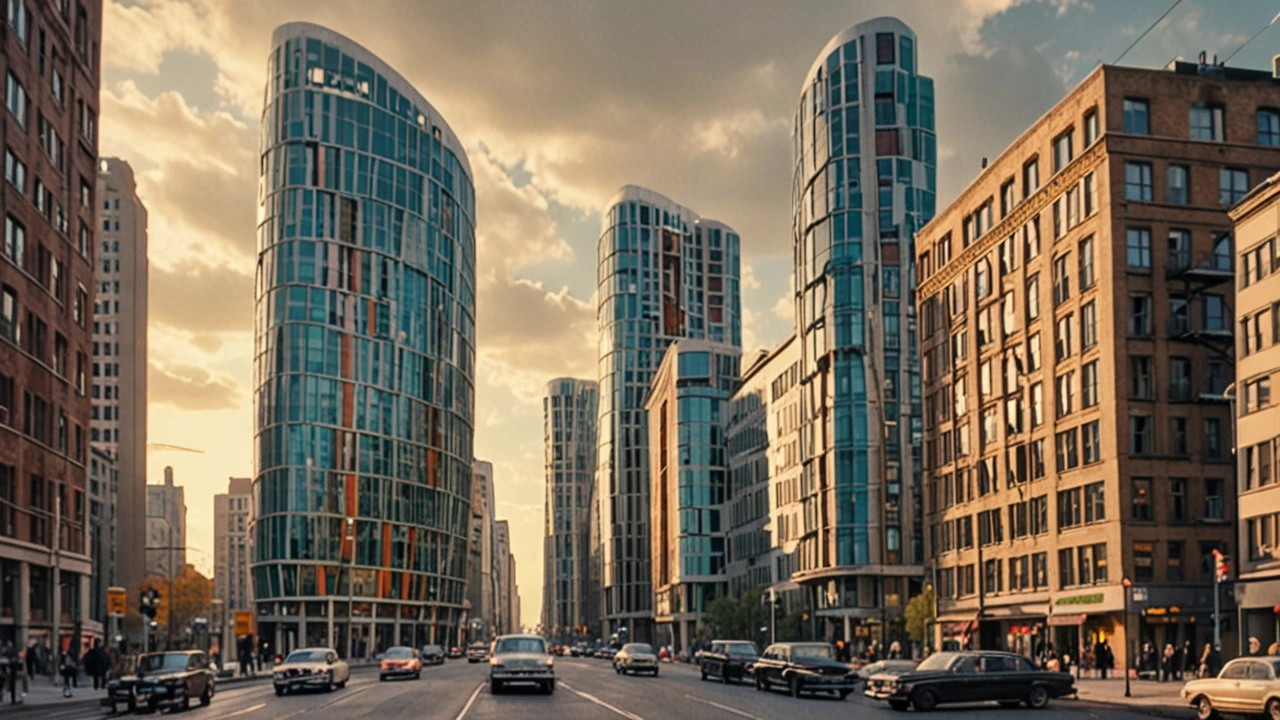
Key Characteristics
Expressionist architecture is often recognized by its daring, unconventional appearance. Its designs push the boundaries of what buildings can look like. One of the main hallmarks of this architectural style is its use of non-linear shapes. Buildings often feature sweeping curves, unexpected angles, and asymmetrical facades. This break from traditional geometric patterns was intended to evoke an emotional response, making architecture feel more alive and dynamic.
Another important characteristic is its emphasis on organic forms. Expressionist architects drew inspiration from nature, mimicking the shapes and structures found in the natural world. This resulted in designs that seemed to grow organically from their environments, blending seamlessly with the surrounding landscape. Materials like glass, steel, and concrete were often used to create fluid, flowing forms.
Innovation in construction techniques also played a significant role. The use of new materials and methods allowed for more daring designs. Glass bricks, reinforced concrete, and steel frameworks enabled architects to realize their bold visions. These materials not only supported the artistic shapes but also brought advancements in building technology. Expressionist architecture was about more than just visual appeal; it was about pushing the limits of what was possible in engineering.
"The task of the architect is to reconstruct the earth as an instrument of isolation and to replenish it with new forms," - Hans Scharoun.
Expressionist buildings often have a narrative element, telling a story through their design. This storytelling aspect was particularly important after the devastation of World War I. Architects sought to convey messages of hope, renewal, and the human spirit's resilience. Buildings like the Einstein Tower in Potsdam or the Chilehaus in Hamburg are not just structures; they are statements.
Color also played a vital role. Unlike the monochromatic tendencies of earlier styles, expressionist architecture embraced vivid hues. Bright reds, blues, and greens were used to make bold statements and accentuate the emotional impact of the design. This use of color represents the vibrancy and optimism of the movement.
Light and shadow were strategically used to create dramatic effects. Large windows, unusual rooflines, and the interplay of light and dark spaces added to the emotional depth of these buildings. The way light plays off the angles and curves can change the appearance of a structure throughout the day, making it a living art piece.
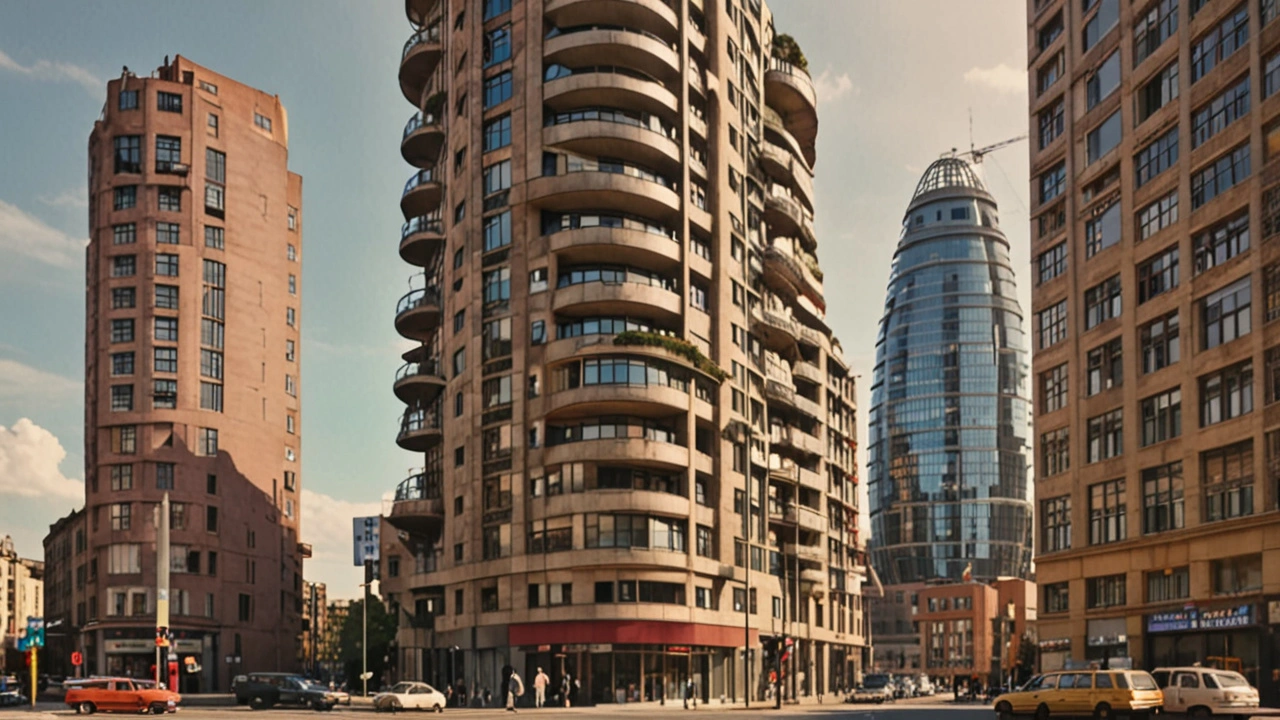
Influential Architects
Expressionist architecture owes much of its unique identity to a handful of pioneering architects. These visionaries pushed the boundaries of conventional design and left a lasting mark on the architectural landscape. One such figure is Erich Mendelsohn, whose work exemplified the dynamism and emotional depth of expressionist architecture. Mendelsohn's Einstein Tower in Potsdam stands as a testament to his innovative spirit, featuring curvilinear forms and a futuristic aesthetic that defied the architectural norms of his time.
Another leading light of the movement was Bruno Taut. Known for his expressive use of color and imaginative designs, Taut brought a whimsical yet profound touch to his projects. His Glashaus (Glass House) pavilion, constructed for the 1914 Cologne Deutscher Werkbund Exhibition, remains a celebrated example of his ability to blend functionality with artistic expression. Taut envisioned architecture as a means to uplift and inspire humanity, a philosophy that resonated deeply with the principles of expressionism.
Hans Poelzig also played a significant role in shaping the expressionist landscape. His Grosses Schauspielhaus (Great Theatre) in Berlin is particularly noteworthy for its dramatic, cave-like interior that evoked a sense of mystery and wonder. Poelzig's use of undulating forms and innovative lighting techniques created an immersive experience that engaged the senses and emotions of its audience. His work exemplifies the expressionist ideal of creating spaces that evoke strong emotional responses.
These architects were not just designers; they were storytellers who used architecture as their medium. Their buildings conveyed narratives that spoke to the human experience, reflecting both the anxieties and aspirations of their time. One could say they were architects of the soul, crafting spaces that resonated with the inner lives of those who inhabited them.
"Architecture is the will of an epoch translated into space," said Mies van der Rohe, capturing the essence of what Mendelsohn, Taut, and Poelzig aimed to achieve with their designs.
Their influence extends beyond the confines of expressionism into various contemporary architectural practices. Many modern architects draw inspiration from their willingness to experiment and push design boundaries. The legacy of these pioneers can be seen in today's bold and imaginative structures, proving that the spirit of expressionist architecture continues to thrive. It's a testament to the enduring power of creativity and vision in shaping not just our physical surroundings, but our shared experience of space and place.
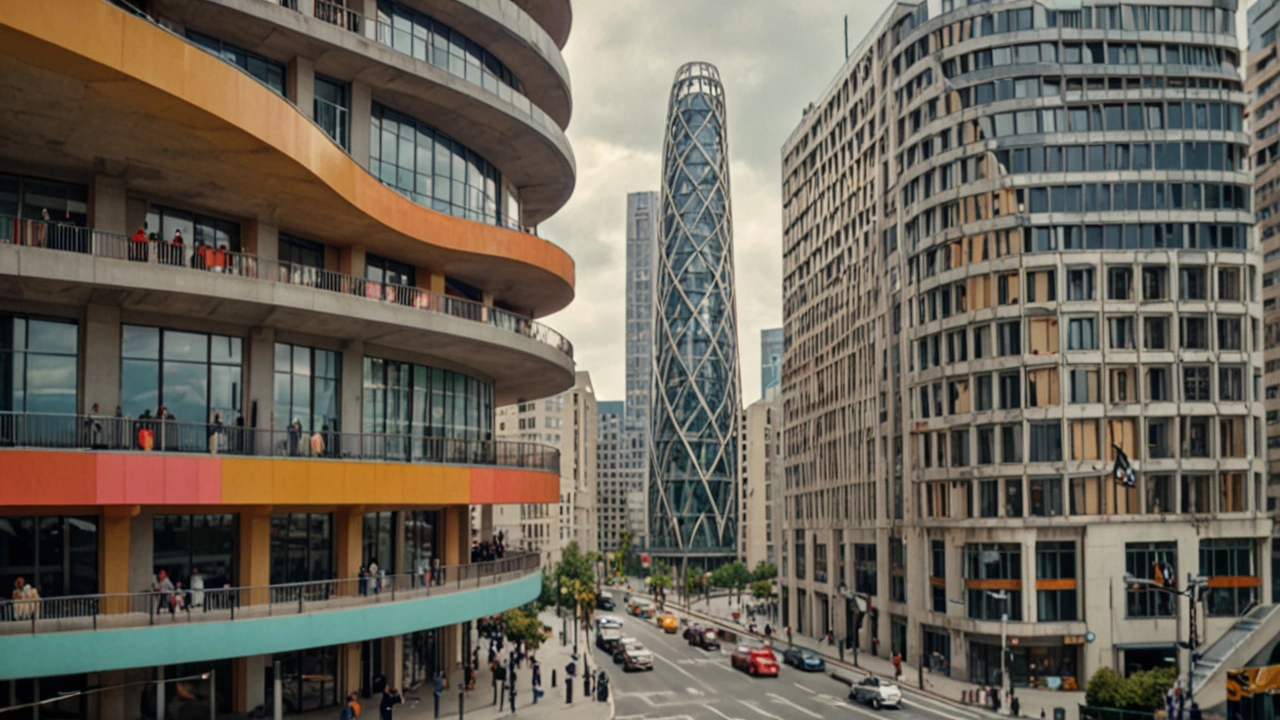
Impact on Modern Architecture
The influence of expressionist architecture on modern architecture is both profound and far-reaching. Emerging from the chaos of the early 20th century, this style of architecture was a response to a world in flux. Its emphasis on emotion, form, and innovation has inspired countless architects and designs in the modern world. One of the most striking impacts is how expressionist architecture opened the door to more creative and non-traditional structures.
Modern architecture often borrows from the bold expressionist approach, embracing experimental forms and unconventional materials. Today, you can see touches of expressionist influence in many modern cities where buildings break away from the standard box-like structures. Architectural works like Frank Gehry's Guggenheim Museum in Bilbao and Zaha Hadid's Heydar Aliyev Center showcase the daring spirit and sculptural forms reminiscent of early expressionist designs.
Expressionist architecture also played a key role in pushing forward the concept of buildings as art. It emphasized that structures could be more than just functional spaces—they could also convey deep emotional and aesthetic experiences. This perspective is echoed in numerous contemporary structures, where we see a blend of functionality and artistry. The Sydney Opera House, with its sail-like design, is a prime example of how modern architecture incorporates expressionist elements to create iconic landmarks.
An interesting fact is that expressionist architecture helped popularize the use of new materials and construction techniques that are now common. For instance, the innovative use of glass, steel, and concrete in dramatic ways was a hallmark of the expressionist style. This experimentation laid the groundwork for the sleek and dynamic buildings we see today. As the renowned architect Frank Lloyd Wright once said, "Every great architect is—necessarily—a great poet. He must be a great original interpreter of his time, his day, his age."
The buildings of today continue to reflect this vision, aiming to resonate with their surroundings and the people who interact with them.
In terms of urban planning, expressionist architecture has influenced the development of more humane and engaging public spaces. It encourages design that considers human experience and interaction. Instead of creating monolithic and impersonal environments, modern architecture seeks to create spaces that are dynamic and inviting. This focus on the human dimension can be traced back to the expressionist ideal of buildings that evoke emotion and storytelling.
All in all, expressionist architecture has left an indelible mark on the landscape of modern design. Its legacy is evident in the countless innovative and emotionally evocative buildings that populate our cities. From daring skyscrapers to thoughtfully designed public spaces, the principles of expressionism continue to inspire and challenge architects to think beyond the purely functional and to reimagine what architecture can achieve.



